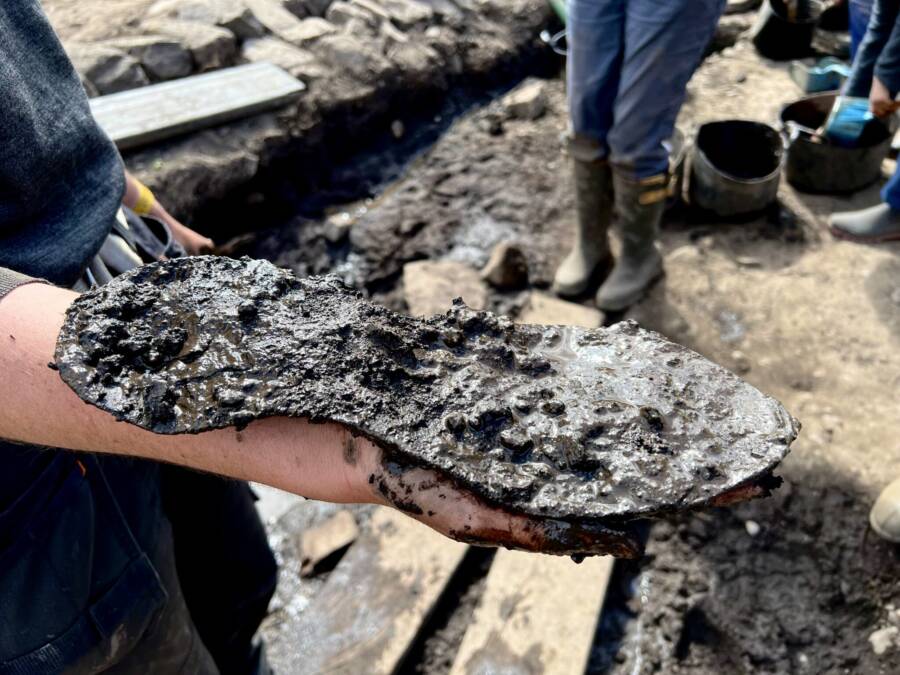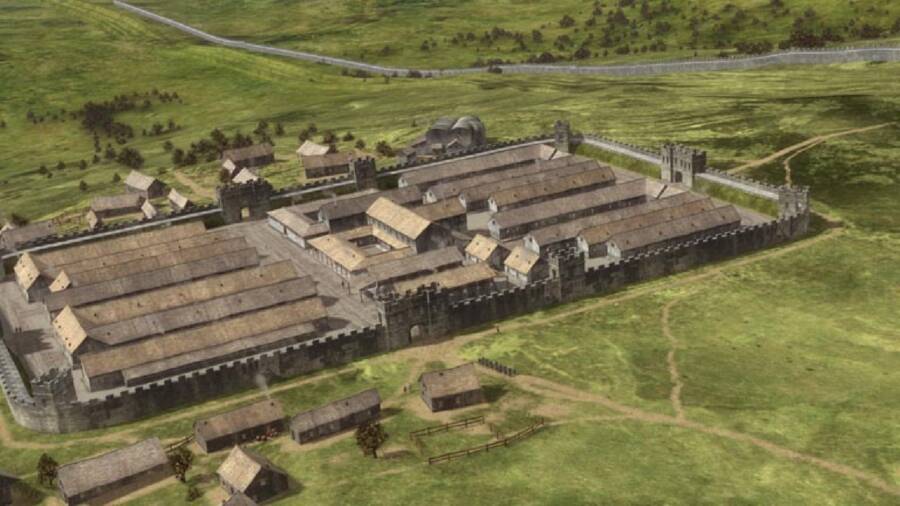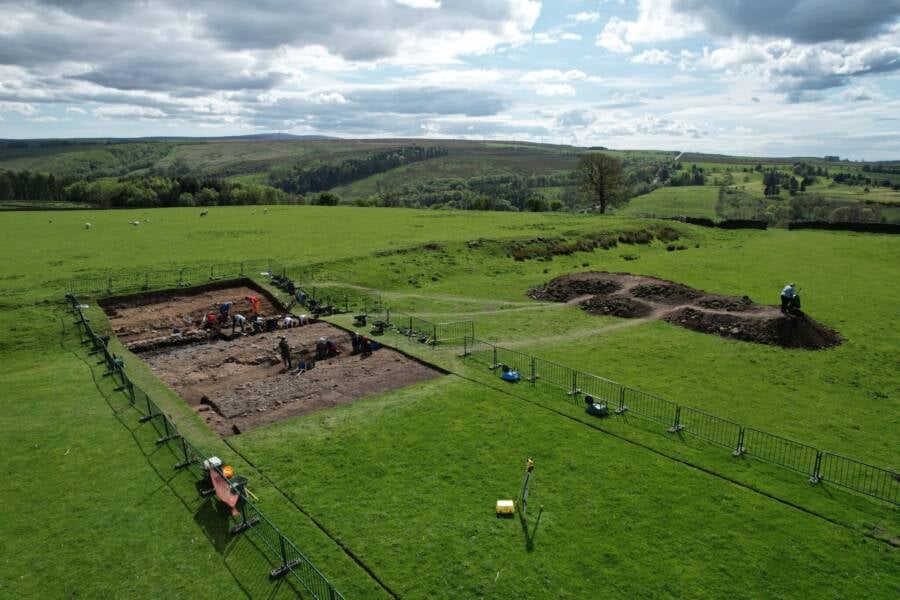The leather shoe is 12.6 inches long, the equivalent of a U.S. men's size 14.

Vindolanda TrustThis Roman shoe seemingly belonged to a soldier with especially large feet.
During excavations at Magna, a 2,000-year-old Roman fort built near Hadrian’s Wall in England, archaeologists have uncovered numerous ancient treasures. In recent weeks, they’ve found pottery, a comb, and wooden tent pegs. But one of the most intriguing finds so far is a pair of Roman shoes — one of which is especially large.
The shoe is not only an important artifact — a direct tie to a person who lived 2,000 years ago — but also part of the larger story of how the Romans defended themselves in ancient Britain.
The Roman-Era Shoe Found At Magna Fort
According to the Roman Army Museum & Magna Fort “dig diary,” archaeologists came across two (unrelated) shoes in May.
The first shoe that archaeologists found at Magna is in good condition. Its sole layers are intact, part of the heel is still attached, and there are hobnails in the outer sole. The toe of the shoe is missing, making it difficult to estimate its original size.
“This gives us a really good look at how Roman shoes were made: multiple layers of leather were used to form the sole, held together with thongs, stitching and hobnails,” the archaeologists wrote. “These also reinforced the outer surface for walking and are found on many styles of shoe.”

Vindolanda TrustThe first shoe found at Magna Fort is in surprisingly good condition, though it’s missing its toes.
The second shoe found at the site was more intact — and so large that it “drew impressed gasps from volunteers and staff alike.”
“Although in this case only one of the several sole layers [was intact],” the archaeologists stated, “the sheer size of the shoe and guesses about who could have worn it dominated the conversation.”
The shoe measured 12.6 inches long, the equivalent of a U.S. men’s size 14.
Though its size makes the shoe a unique discovery, volunteers at the site were excited about the artifact for another reason as well.
“It’s always exciting to find anything that hasn’t been touched for 2,000 years but a shoe is such a personal item; it really puts you in touch with the people who used to live at the fort,” one volunteer stated.
Indeed, Magna Fort has a long and fascinating history that began some 2,000 years ago with the construction of Hadrian’s Wall.
The Long Roman History Of Magna Fort

Vindolanda TrustA depiction of Magna, an ancient fort set along Hadrian’s Wall in Roman England.
Magna, also known as Carvoran, is a fort located near Hadrian’s Wall, which was constructed by Emperor Hadrian in 122 C.E. to secure the Roman Empire’s northern border.
Positioned at the junction of two major Roman roads, the Maiden Way and the Stanegate, ancient Romans at Magna would have had a commanding view of their surroundings. They also went to great measures to defend the fort, as recent excavations have revealed.
Archaeologists have been hard at work excavating defensive ditches, banks, and ramparts outside of the fort’s northern wall. Some of the ditches they’re investigating are “ankle breaker” ditches. These were narrow, deep ditches, hidden with water, where enemy soldiers would trip and “break” their ankles.

Vindolanda TrustThough little of the ancient Roman fort remains, excavations have already turned up some exciting finds.
That said, much of what once existed at Magda was sadly destroyed.
“The site of the fort, and its civilian settlement, is now little more than a series of fields with pronounced humps and bumps, the remnants of the rampart behind the fort walls together with the remains of an exposed angle turret,” states the fort’s website.
“The final fort at the site was subjected to a huge amount of archaeological harm, damage from farmers trying to improve the land and road builders looking for stone for the military way. Some of the artefacts found during this time were rescued by antiquarians and therefore survive to this day [while] others are lost to us forever.”
Perhaps little of Magna Fort is visible on the surface. But as the discovery of the Roman shoes — and other artifacts — shows, there’s still plenty to discover beneath the soil.
After reading about the surprisingly large Roman-era shoe found in England, learn all about the Picts, the ancient Scottish people who fought off the Romans. Or, discover who built Stonehenge.





